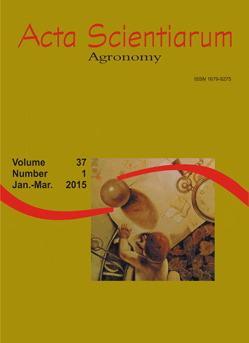<b>Adsorption of P and forms of iron in no-tillage areas in the ‘Cerrado’ biome
Resumo
The objective of this study was to evaluate the forms of iron extracted as sodium dithionite-citrate-bicarbonate (Fed), acid ammonium oxalate (Feo) and sodium pyrophosphate (Fep) and the relationship between these variables and the total organic carbon content and maximum adsorption capacity of P (MACP). The areas selected for this study had been using a no-tillage system (NTS) for varying periods of time: 3 years (NTS3), 15 years (NTS15) and 20 years (NTS20). These areas were compared with an area of native ‘Cerrado’ (CE) and a pasture area planted with Brachiaria decumbens (PA). The soil of the areas studied was classified as dystrophic oxisol. In each area, samples were collected at 0–5 cm and 5–10 cm. A correlation was observed between the C content and the different forms of Fe in the areas studied. There was a significant positive correlation between the carbon content and the forms of iron (Feo, Feo/Fed and Fep) and a negative correlation with the level of Fed. The areas of CE and PA had the highest MACP, which diminished as the amount of time of NTS use increased.
Downloads
DECLARAÇÃO DE ORIGINALIDADE E DIREITOS AUTORAIS
Declaro que o presente artigo é original, não tendo sido submetido à publicação em qualquer outro periódico nacional ou internacional, quer seja em parte ou em sua totalidade.
Os direitos autorais pertencem exclusivamente aos autores. Os direitos de licenciamento utilizados pelo periódico é a licença Creative Commons Attribution 4.0 (CC BY 4.0): são permitidos o compartilhamento (cópia e distribuição do material em qualqer meio ou formato) e adaptação (remix, transformação e criação de material a partir do conteúdo assim licenciado para quaisquer fins, inclusive comerciais.
Recomenda-se a leitura desse link para maiores informações sobre o tema: fornecimento de créditos e referências de forma correta, entre outros detalhes cruciais para uso adequado do material licenciado.




















































